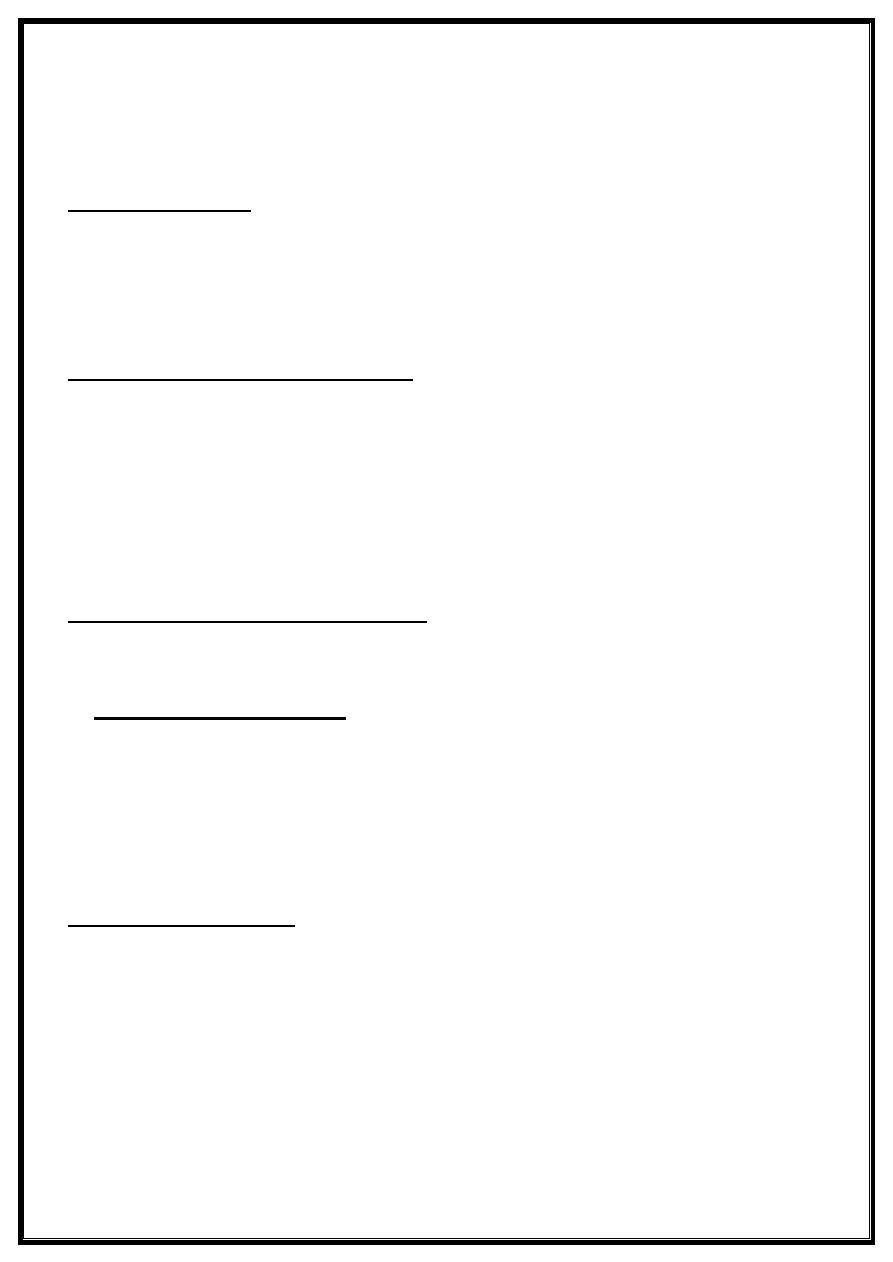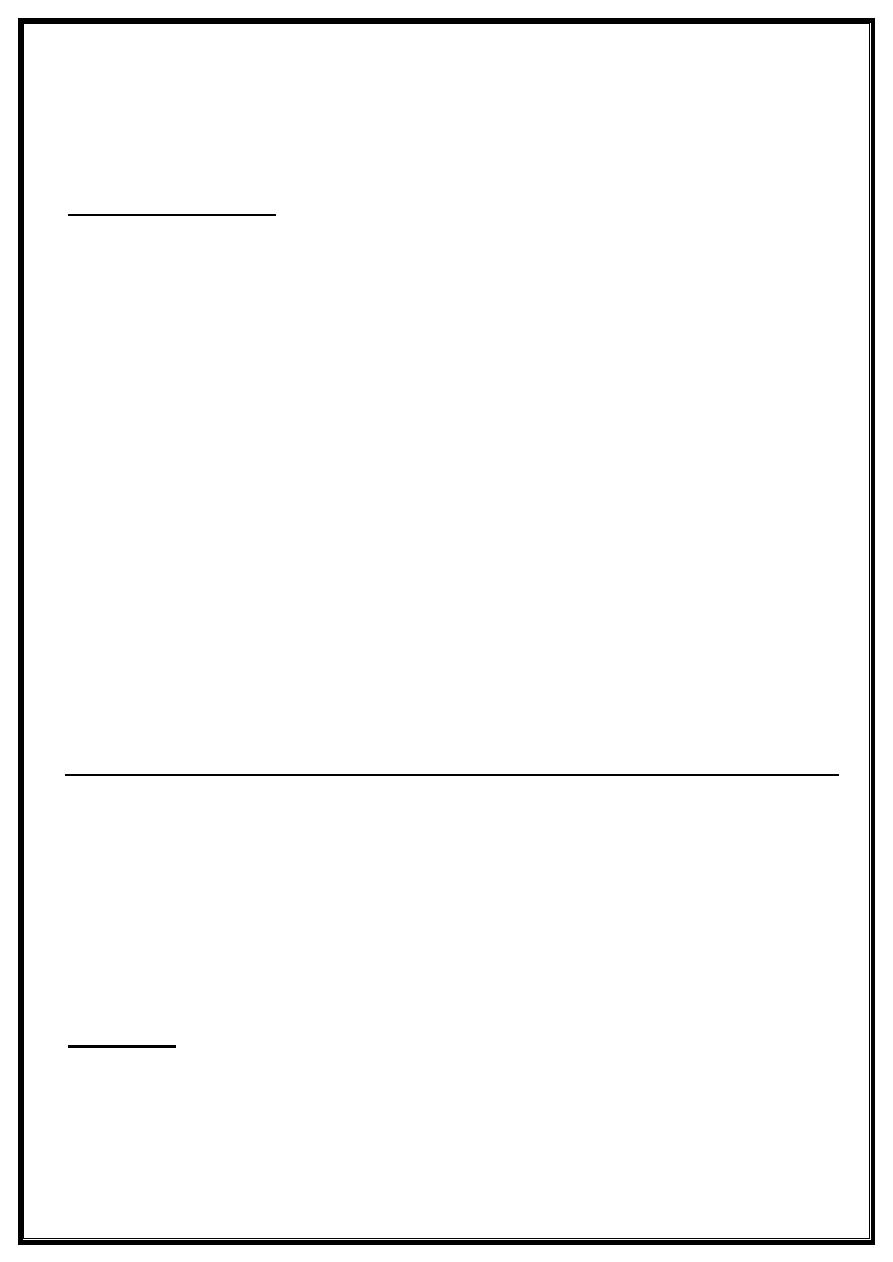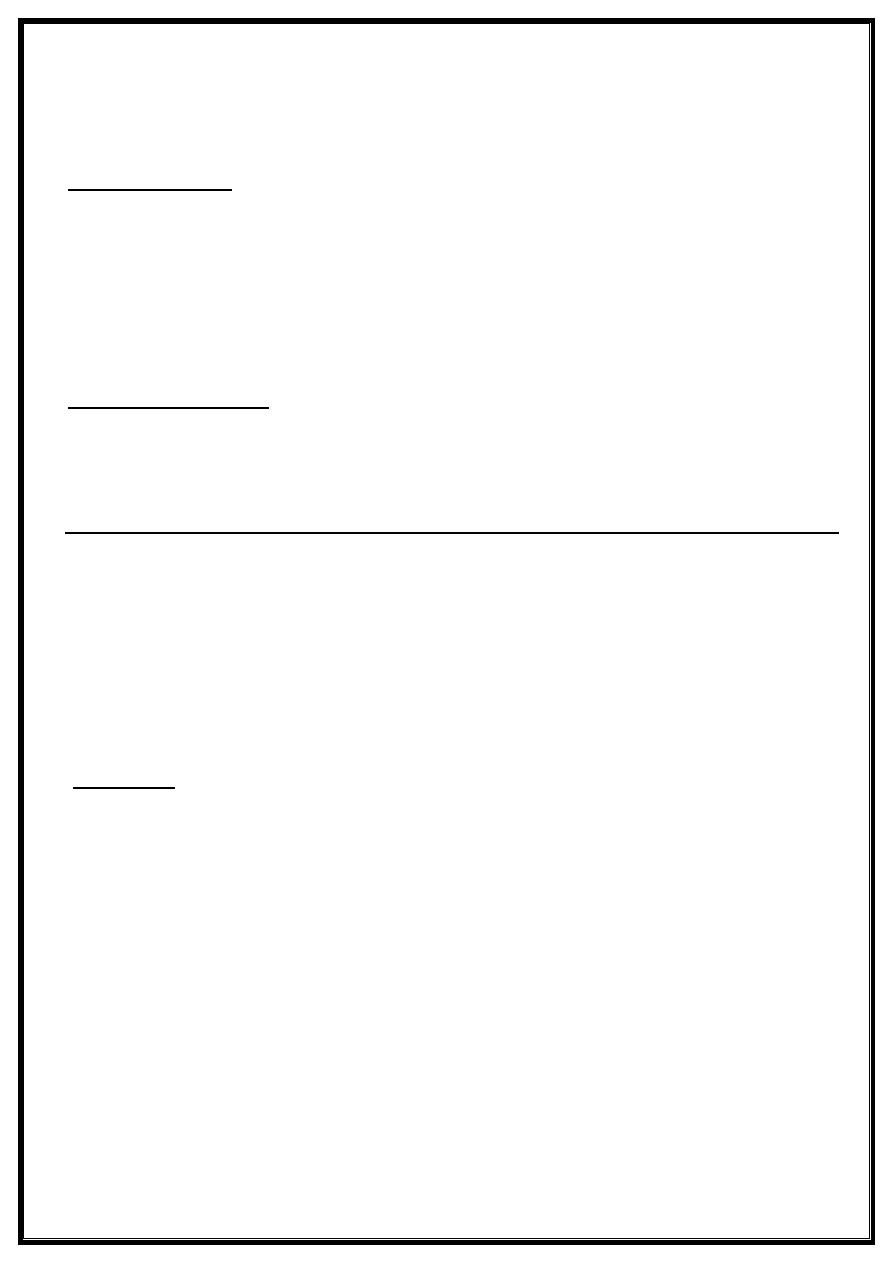
Anxiety
• It's an internal sense of apprehension and fear associated with many somatic
Symptoms and it is a common symptom of many disorder.
Biology of Anxiety
The following neurotransmitter systems are involved;
1-Nor adrenalin, there is an increase of this substance in anxiety.
2-Serotonin (5HT) was decrease.
3-Gamma amino butyric Acid (GABA) ,its decrease in anxiety.
Classification of Anxiety disorders
1- Generalized anxiety disorders.
2-Panic disorders.
3-Phobia.
4-Obsessive - compulsive disorder.
5-Post-traumatic stress disorder.
6-Anxiety due to medical conditions.
7- Substance induces anxiety.
Clinical picture of Anxiety disorders
All anxiety disorders could share the following symptoms in addition to their
specific Symptoms.
A. Psychological symptoms
1-Apprehension.
2-Irritability.
3-Fear of death, of going med, or loss of self control.
4-Worry.
5-Poor concentration.
6-Desire to run away.
7-Derealization.
B- Somatic symptoms:
1-Palpitation.
2-Tremor.
3-Fatigue.
4-Sweating.
5-Diarrhea.
6-Frequency of micturation.
7-Insomnia.
8-Hyperventilation, shortness of breath.
9-Headache.
10-Loss of libido.
11-Loss of appetite.

Generalized Anxiety disorder
This is chronic anxiety associated with uncontrollable worry and different Somatic
Symptoms. Patient is worry in an excessive manner about something with them or
with other when they no need to worry about.
Treatment of Anxiety
1-Benzodiazepines group
(e.g. diazepam, chlordiazepoxide ),is the best. But they had a side effect of
dependence, so better to given for short duration.
2- Buspirone
it is effective anxiolytic, but take time to work as the anti depressant.
3- Barbiturates
it is little used now.
4-Tricycle anti depressant
they are used in lower doses as anxiolytic (like: impramine, chloimpramine and
Amitryptilline).
5-Beta Blocker
these can be useful in some mild cases especially those cases as associated with
palpitation and tremor.
Atenolol is the most suitable drug.
6-Neuroleptics
they are used in low doses. They do not induce dependence, they are Often
preferable to benzodiazepine group (like promazine and thioridazine).
Panic disorders
It is represent a sever attack of anxiety which are not restricted to any particular
situation or circumstances and there for its unpredictable.
Chest pain and palpitation are common symptoms. The hyperventilation could
induce the attack. During the attack they patient often fear of suffering from a
serious illness such as a heart attack or stroke and may there for seek for
emergency medical attension.
Treatment
1-Benzodiazepines
Is the most effective for rapid form of short-term relief for panic attack.
2-Tricyclic anti depressants
Is more effective for long-term relief, especially impramine.

Phobia
It is the fears that are out of proportion to the object or situation leading to
avoidance of the object or situation.
It is many types;
1- Simple phobia. Like spider phobia (arachnophobia) and phobia of flying.
2- Social phobia. Characterized by fear of social situation in which the affected
person is exposed to the gaze of others.
3-Agoraphobia. It is the phobia of crowded area in which the patient fears of being
difficult to escape out.
4-Claustrophobia. It is the most common one, her the patient fear of closed area.
Treatment of phobia
1-Desensitization.
2-Anxiolytic (diazepam, chlordiazepoxide and others) in short-term.
3- Tricycle antidepressant is useful if there are high level of depression.
4-Mono amine oxides inhibitors.
Obsessive-compufsive disorders
-Obsession mean recurrent unwanted thought which is usually anxiety provoked.
-Compulsion means repeated unwanted acts that relieving tense.
It is represented by repeated hands washing because of thought of contamination
and repeated checkup door closure.
Treatment
1-Behavioral methods
are the mainstay of treatment by graded exposure to a feared situation without the
anxiety-relieving compulsion.
2-Antidepressants:
a)Tricycle antidepressant especially (cloimpramine).
b)SSRI antidepressant e.g.. High dose of fluoxetine.
Dr.Hassan M. Al jumaily
Neurologist
